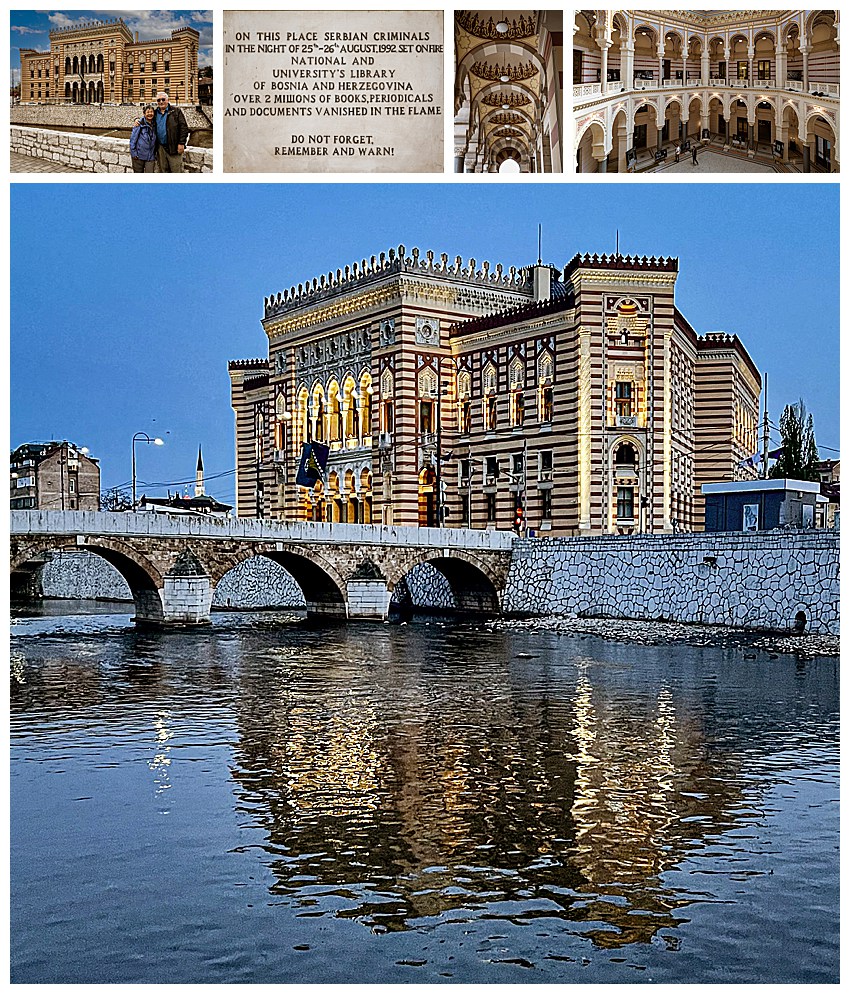
We have just started our latest adventure with Mehmet Özbalci of TurFantastic, this time to photograph five Balkan countries. Mehmet has become our favorite photography tour guide, and we have traveled with him to Iran, Sri Lanka, Georgia, Armenia, Uzbekistan, Kazakhstan, Turkey and other countries. He knows where to go at which time for the best photographic light, and he worries, so that we don’t have to… ☺
We started in Sarajevo, the capital, and this is the first of two blog posts covering Bosnia & Herzegovina. You cannot really travel in this country without being constantly reminded of the Bosnian war, when Serajevo was encircled and under siege from 1992 until 1995, making it the longest siege in modern warfare (3 years, 10 months, 3 weeks and 3 days). The city looks sparkling and new, but many buildings have signs telling that they were totally destroyed during the war, and that what we see has been rebuilt since the end of that war.
For example, the building shown above was the local library prior to the war. The plaque (top-middle), says that arsonists burned it to the ground on August 25, 1992. They destroyed over 2 Million books and manuscripts, many of with were original and one-of-a-kind, dating back many centuries. The building you see here replaces that library, and is now used as a City Hall plus museum.
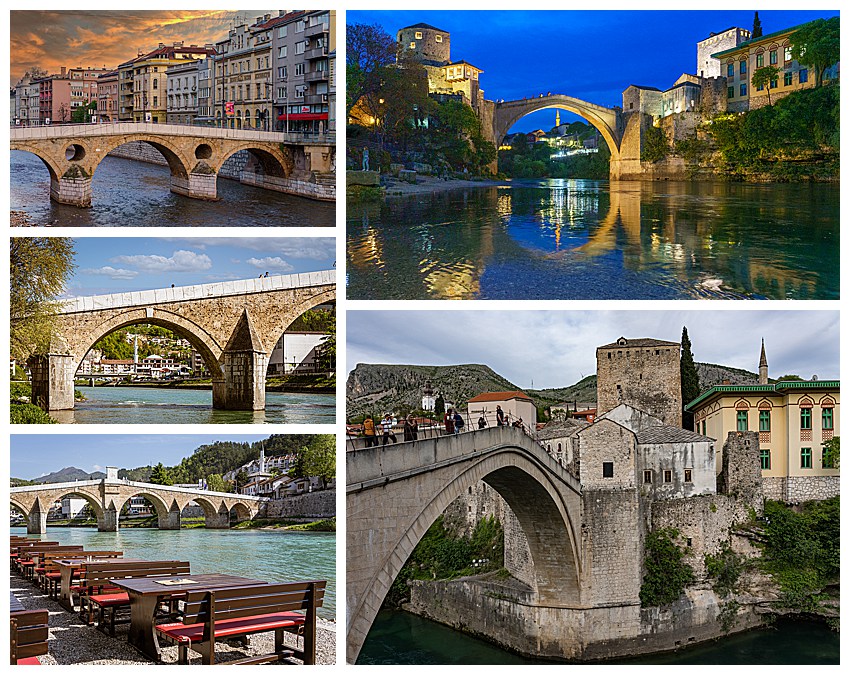
Bosnia (the proper name of the country is Bosnia and Herzegovina, but I will generally shorten it to Bosnia in these blogs) is proud of the abundant source of water they have, and many of their bridges are artistic architectural marvels, including the arch bridges Latin Bridge, Mostar and Konije. In many cases, these bridges were originally built as long ago as the 15th century, though many were destroyed during the war, and then rebuilt after the fighting stopped. We photographed the breathtaking Old Bridge at Mostar(top right) during the blue hour, which was also a gem for culinary and nightlife.
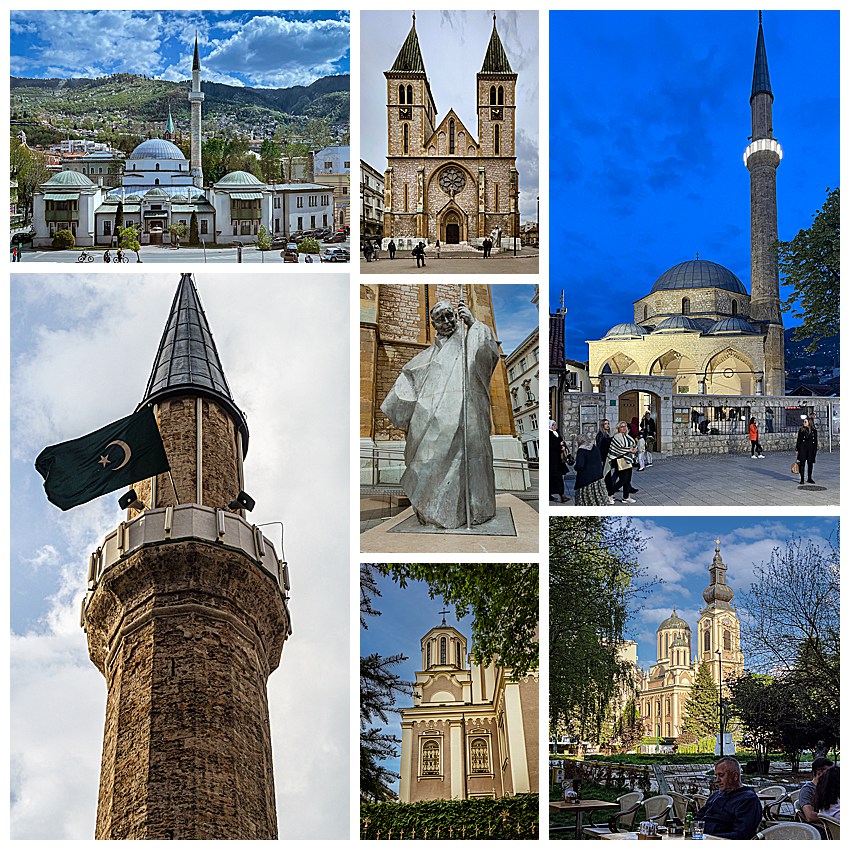
According to a 2013 census, 51% of Bosnians are Muslim, 46% are Christian, with an estimated 1000 Jews in the country, and remaining being athiest or other religions. This split was a large reason for the Bosnian war with the Muslims and Christians waging war, despite Sarajevo being almost equally split. The ethnic groups include Bosniaks, Serbs and Croats. There are many mosques, churches and a synagogue in town. St Paul II, the then-pope of the Catholic church, visited Sarajevo in 1997, trying to help heal the pain of the recent war. There is now a statue of him (middle) in front of the Sacred Heart Cathedral (top middle).
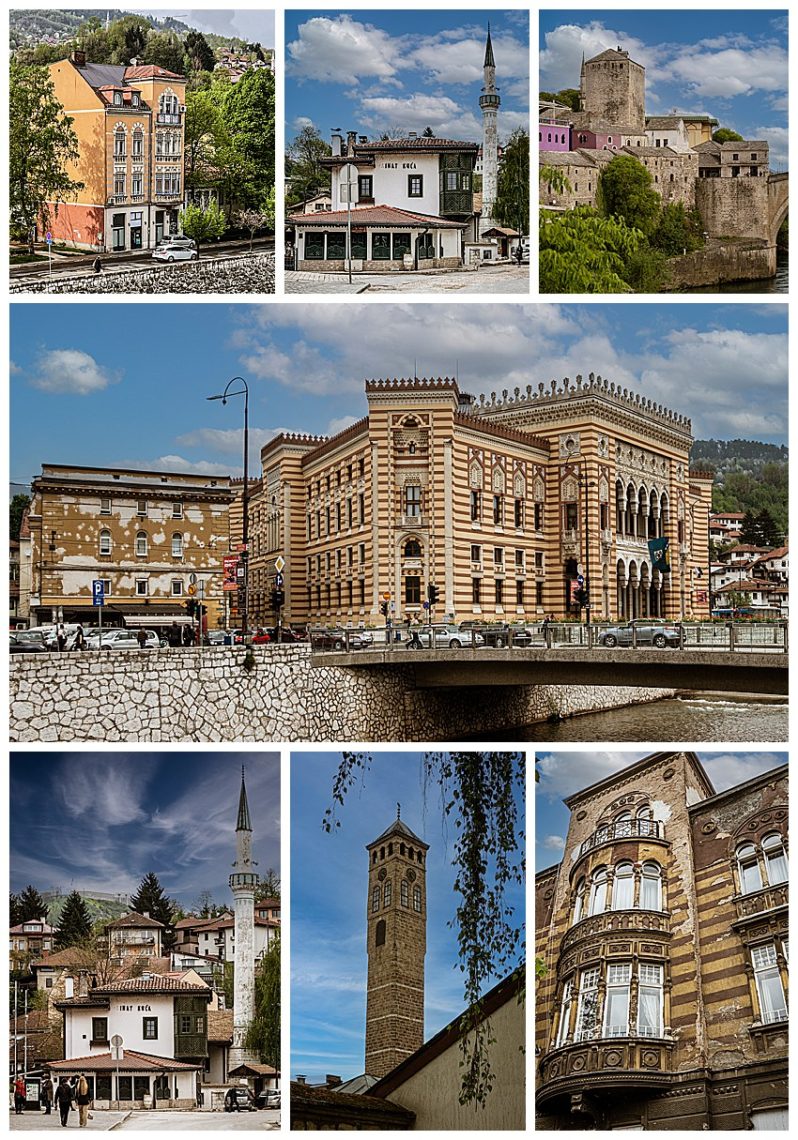
The architecture of Bosnia is quite diversified. Some of the buildings are new, having been built since The War (center), and often sitting right next to older buildings showing much war damage (left building in center image). Spires from mosques, churches, and even clock towers are throughout the city.
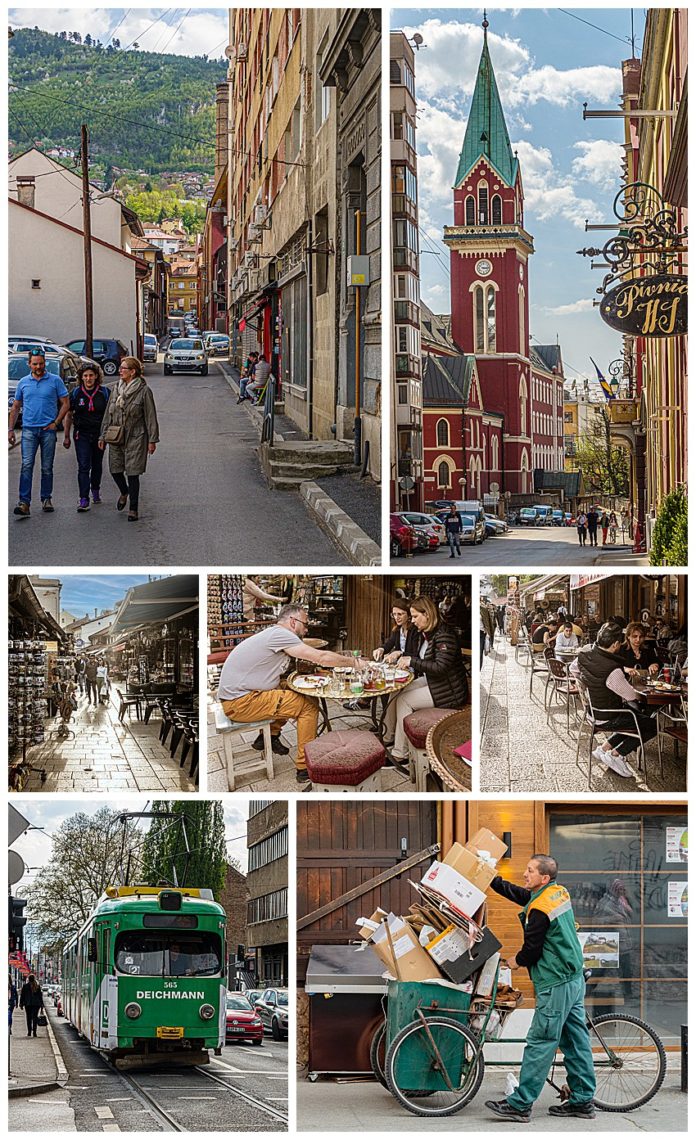
Many of the streets are very narrow, with those in the center of Sarajevo filled with restaurants and souvenir shops (top and middle rows). Sarajevo was the first city in Europe to have an electric train system, which means it used to have the newest system in Europe, and now it has the oldest (lower-left). You can also see men (always men…) on bicycles collecting recycling materials (lower-right).
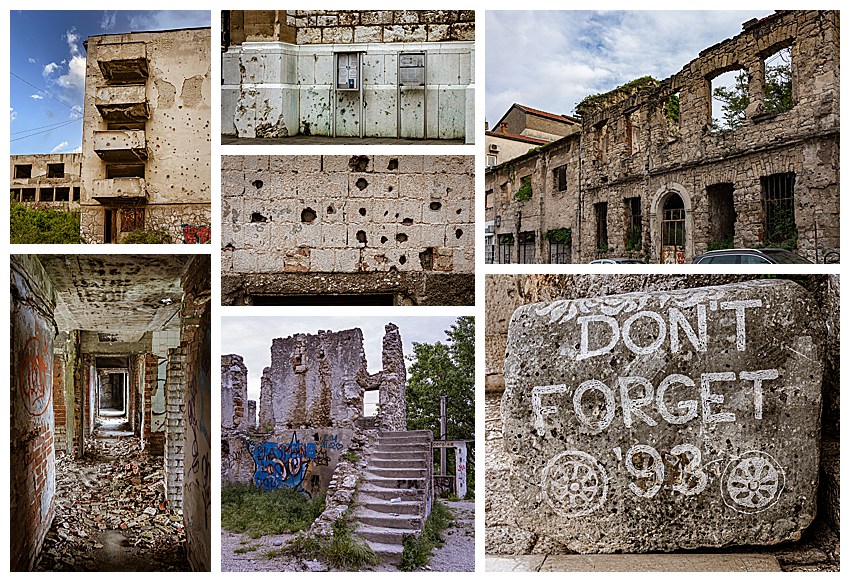
As I mentioned earlier, The War, defined as the Bosnian siege of Sarajevo from 1992 to 1995, is never far from anyone’s mind in Bosnia. Here are a few of the bombed out buildings that can still be seen around the area, along with one phrase inscribed in rock that is the catch-phrase of Bosnia (lower-right).
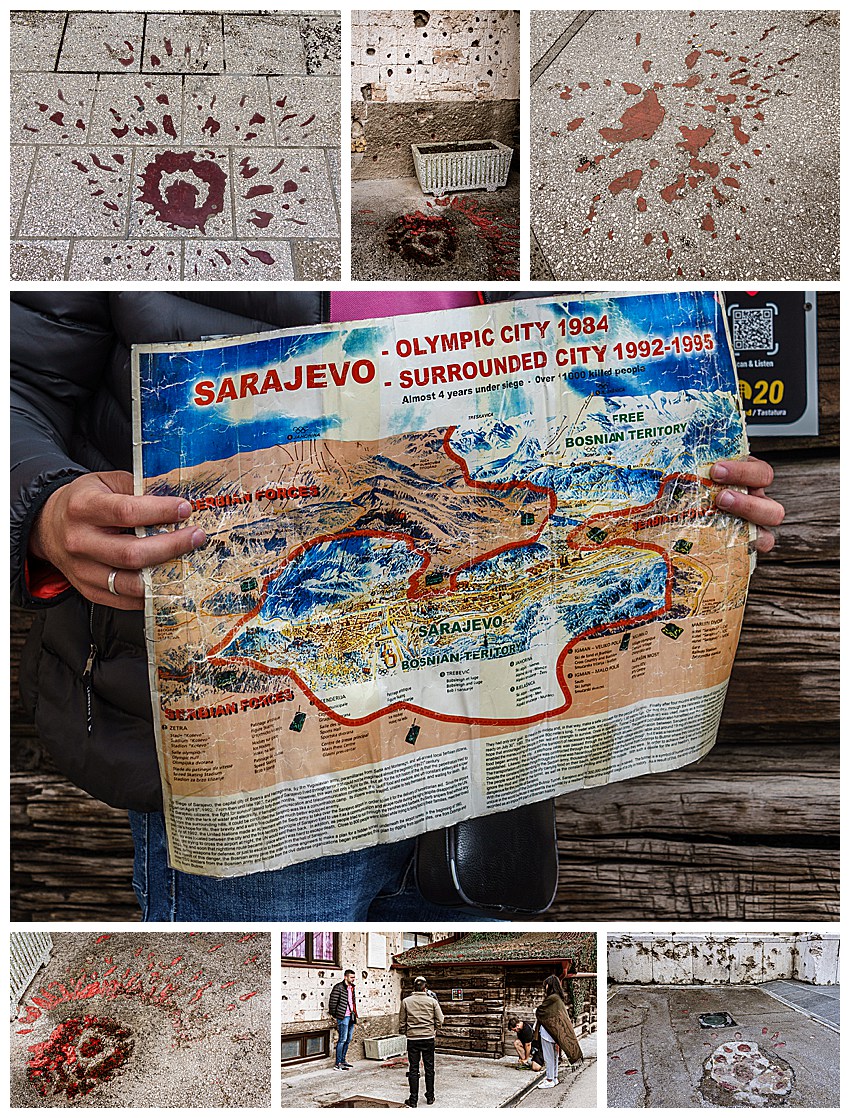
During the siege, hundreds of mortars were fired into Sarajevo every day for almost four years. Mortars were dropped at an average rate of 330 shells per day. More than 11,000 people were killed and more than 50,000 were wounded from these attacks.
Throughout the city, there are bronze frames in the sidewalk, surrounding a hole and splatter out from that hole. These are places where mortar shells exploded, killing civilians, and are called Sarajevo Roses. The hole is the crater created from the mortar shell, with the splatter showing where the bomb fragments flew. These are colored red, to remind people walking by of the blood that was shed there (all except center image).
Our tour guide held a map for us to see, showing where the enemy surrounded the city (in red). There was a small corridor in the NorthEast that remained held by the Bosnians, which served as the only means for getting food and supplies into the city during the siege (center).
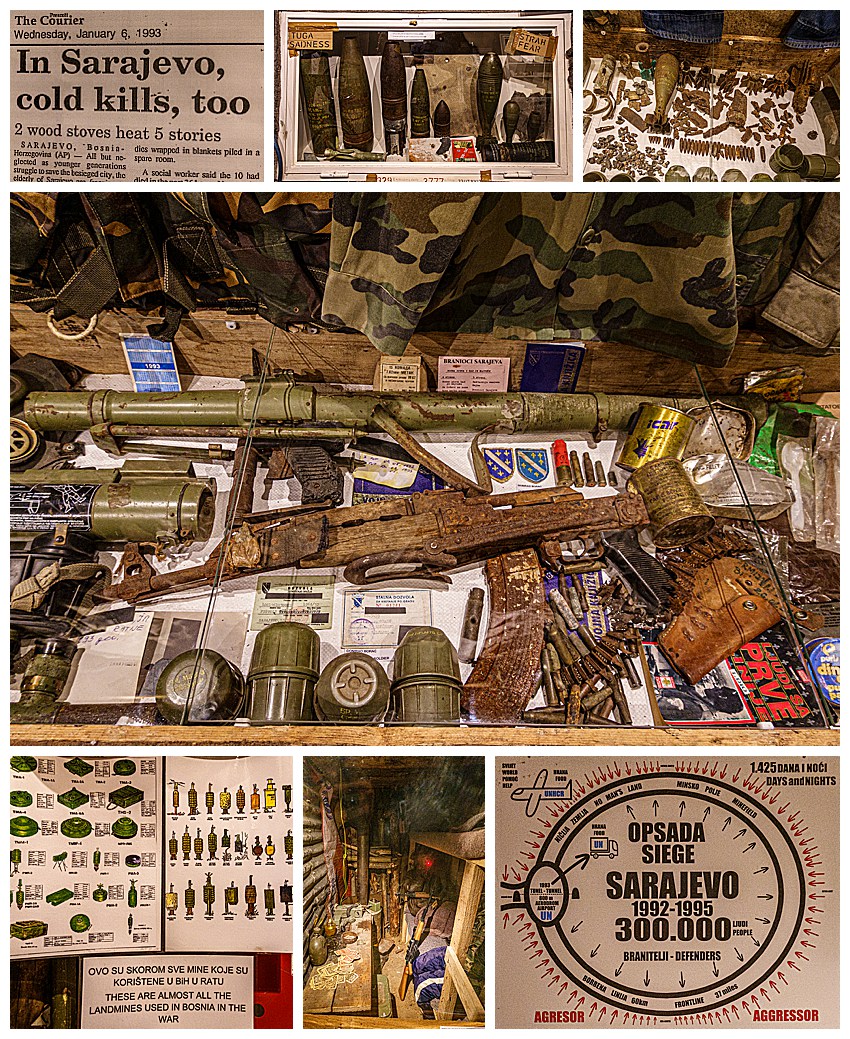
We visited one small War Museum, showing remnants of The War. The story about Cold Kills Too (upper-left) reported on the fact that there was no heating oil, no gas, and little food. The winters in Sarajevo are cold, which also killed civilians. The lower-left image shows the variety of landmines that the enemy put into the ground surrounding the city. Lower-center shows a small underground room where a Bosnian soldier may sleep between battles. Other images show various armaments used by the Bosnian military in the defense of the city. The chart (lower-right) indicates there were 300,000 inhabitants in the city, under siege from 1992 until 1995.
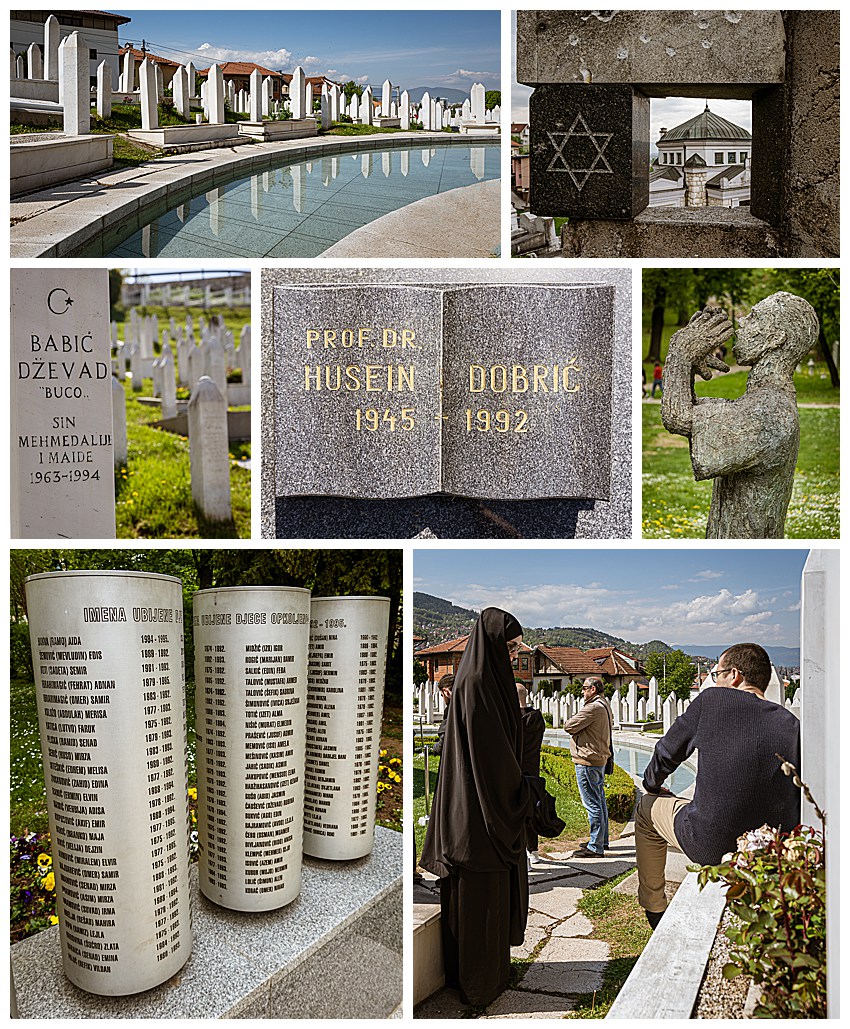
We visited several cemeteries in Bosnia. One was dedicated to soldiers that died during the siege (top and center rows). One was dedicated to children killed in the same War (middle-right and lower-left), which included 6 cylinders (only 3 are shown) that listed the name of each of the almost 1600 children killed. We visited the soldier cemetery on May 2, which is the day that Muslims visit the graves of loved ones (lower-right).
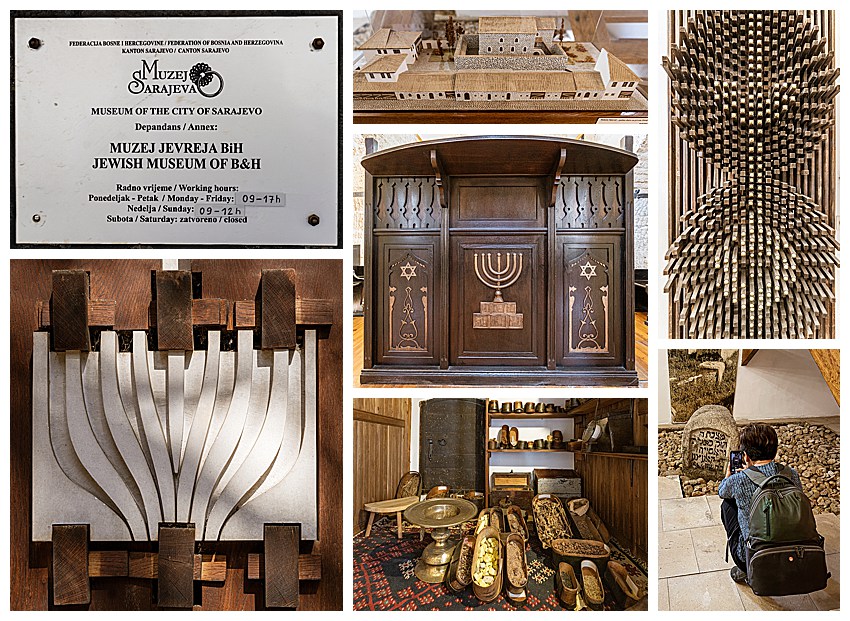
There are only an estimated 1000 Jewish people in all of Bosnia, yet they do have a couple of synagogues. We visited one in Sarajevo, shown above.
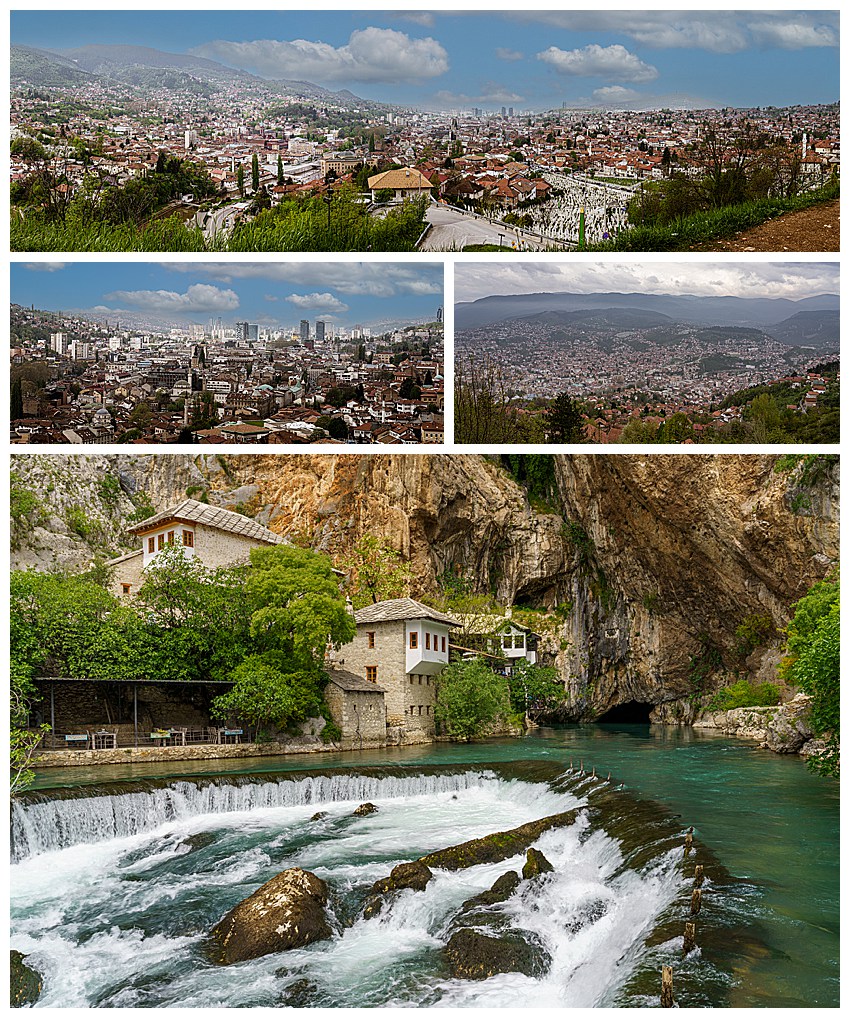
Bosnia is surrounded by mountains, which yield many beautiful landscapes. We visited the waterfalls at Blagaj for lunch one day (bottom), where we also had the best seafood restaurant we’ve ever experienced. The other images are views of the cities from various mountain viewpoints throughout the country.

1 thought on “Balkans 1 – Bosnia 1”
Comments are closed.